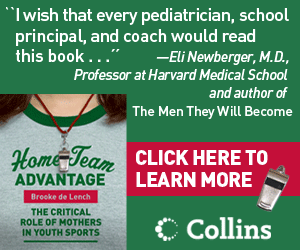 Participation in high school sports is at an all-time high, with nearly 7 million high school students playing sports. But with participation comes sports injuries: 8,000 children receive emergency room treatment for sports-related injuries every day, and a total of 715,000 high school sports injuries are reported each year.
Participation in high school sports is at an all-time high, with nearly 7 million high school students playing sports. But with participation comes sports injuries: 8,000 children receive emergency room treatment for sports-related injuries every day, and a total of 715,000 high school sports injuries are reported each year.
March is National Athletic Training Month. In recognition of the important role sports parents, coaches and athletic all play in preventing injuries, the NATA's theme this year is Sports Safety is a Team Effort. Along with the North American Booster Club Association, the NATA has prepared an online Sports Safety Checklist offering important information for parents who want to keep their kids as safe as possible.
In particular, the NATA recommends that parents take the following steps before allowing their children to participate in organized sports:
1. Assess the financial and time impact on your family - In the excitement of having your child participate in organized sports, the family must consider the family commitment required. If not prepared, the time and financial commitment can lead to increased stress on the family making a positive sports experience a negative one.
2. Determine if your children are physically and mentally "in shape" - Parents, with assistance from coaches, should determine whether their children are physically and psychologically conditioned for the sport/activity level they're playing. Do not push children into something they do not want to do.
3. Have your children take a pre participation physical examination. - All children should receive both a general medical exam and an orthopedic screening, which will determine their readiness to play and uncover any condition that may limit participation.
4. Find out who's taking care of your kids - In the case of injury, find out who will provide care and ask to review their credentials. Many schools and sports teams rely on athletic trainers or parents with medical and first aid training and certification to keep kids safe. Yet less than half of high schools have access to athletic trainers.
5. Provide coaches with your child's medical history - Parents should complete an emergency medical authorization form, providing parent contact information and permission for emergency medical care for their children. Check with your school/league to obtain the form.
6. Make sure your children are eating and drinking to win - Parents should ensure their children are eating a healthy, balanced diet. Without proper nutrition and hydration, young athletes will feel sluggish, which can increase their chance of injury. Improper hydration also increases the risk of heat illness.
7. Check out the coaches' qualifications - A background check should always be performed on coaches and volunteers before they are allowed to work with children, and parents should ensure the following guidelines are followed:
- Coaches should be trained in the sport they are coaching. They should be credentialed if that is a requirement in the state, conference or league.
- All coaches should have cardiopulmonary resuscitation (CPR), automated external defibrillator (AED) and first aid training.
- Coaches should strictly enforce the sports rules and have a plan for dealing with emergencies.
8. Ask if the school/league has an emergency action plan - Every team should have a written emergency action plan, reviewed by the athletic trainer or local Emergency Medical Service. Individual assignments and emergency equipment and supplies need to be included in the emergency action plan. If an athletic trainer is not employed by the school or sport league, qualified individuals need to be present to render care. Knowing that a school has prepared for emergency will give parents peace of mind.
"Sports injuries are a problem at any age, but kids playing increasingly competitive sports in school are especially at risk," said Brian Robinson, ATC, chair of NATA's secondary school committee. "Educating parents and school personnel about ways to help children avoid common sports-related injuries is a top priority. March is National Athletic Training Month with the theme of Sports Safety is a Team Effort, making this information all the more timely."
"Providing coaches, teachers, athletic trainers, and others with important information is a key focus of our education efforts, but parental involvement is probably the most crucial step in ensuring that child athletes remain safe and injury-free," Robinson notes.
Source: National Athletic Trainers' Association (NATA). The NATA represents and supports 30,000 athletic trainers, health care professionals who specialize in the prevention, diagnosis, treatment and rehabilitation of injuries and illnesses, and adhere to a code of ethics. Only 42 percent of the nation's high schools have access to athletic trainers. NATA supports the right of all patients to have equal access to the services of athletic trainers through the Athletic Trainers' Equal Access to Medicare Act (H.R. 1137).









